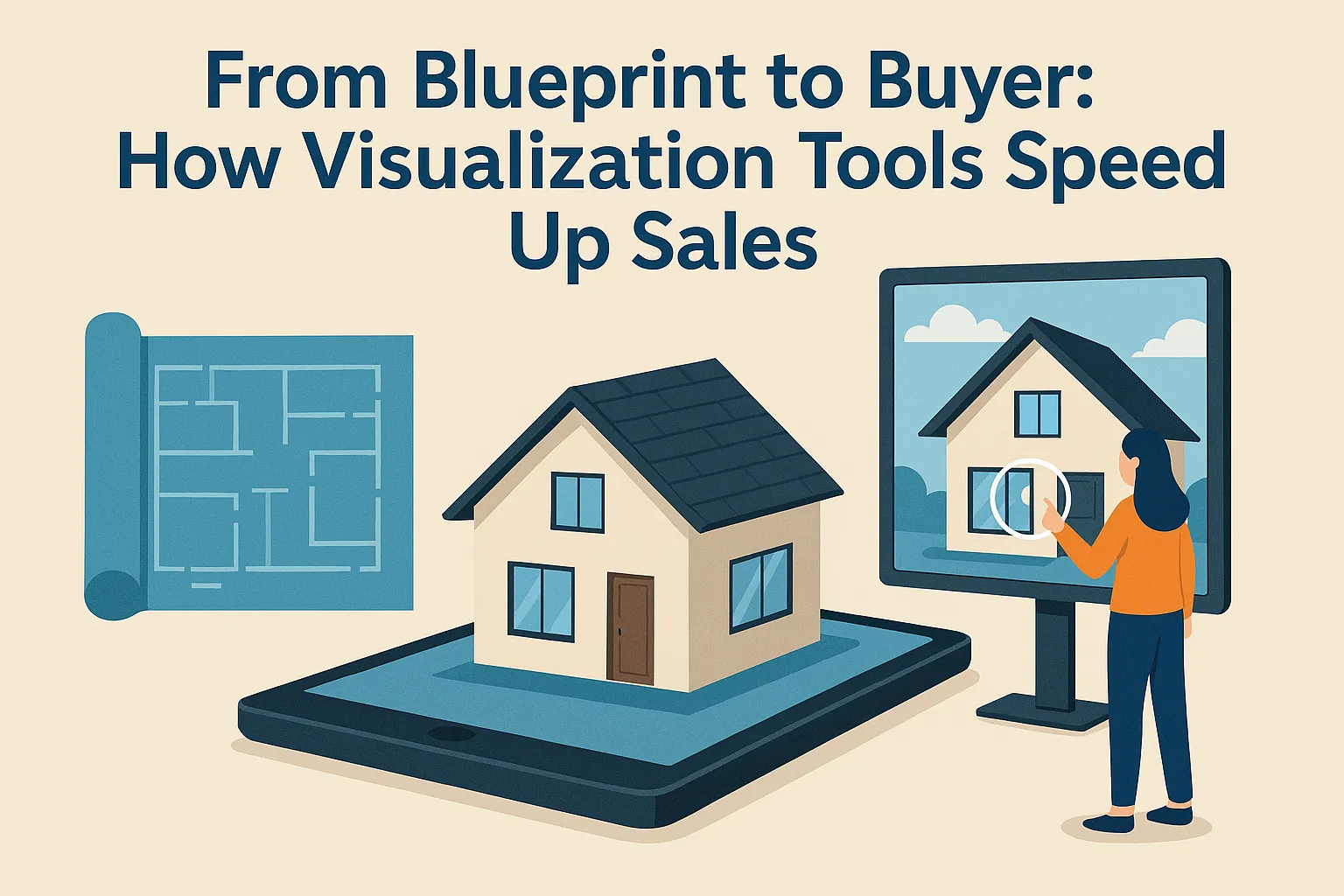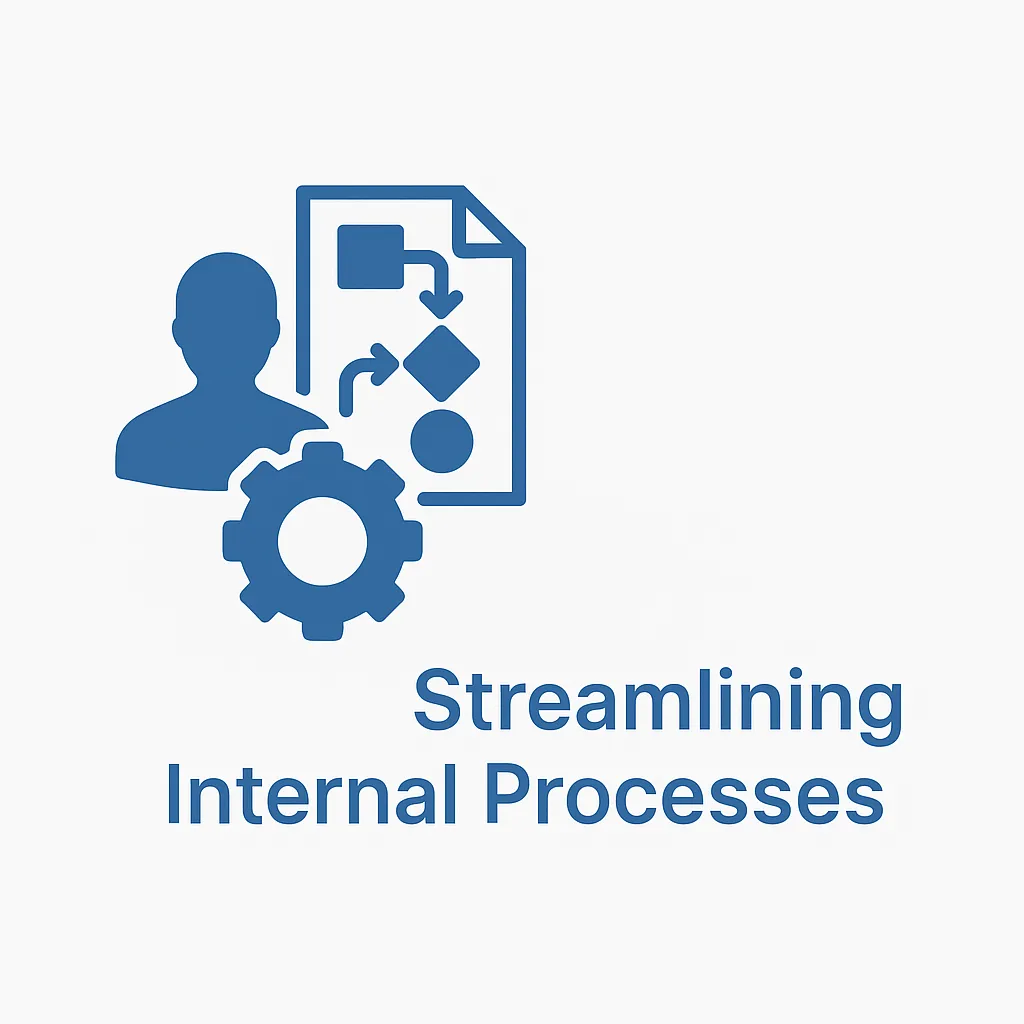From Blueprint to Buyer: How Visualization Tools Speed Up Sales


In the highly competitive real estate industry, time is not just money—it’s the difference between a sold-out project and a slow-moving inventory. With the advent of advanced visualization tools, the traditional sales cycle has been disrupted for the better. From the moment an architect sketches a blueprint to the final handshake with a buyer, cutting-edge technology is playing a crucial role in accelerating every step of the process. These tools are bridging the gap between imagination and reality, enabling potential buyers to step inside unbuilt properties through 3D walkthroughs, virtual staging, and immersive tours. They provide a sense of scale, space, and emotion that 2D floor plans simply cannot offer. As a result, the decision-making cycle becomes significantly shorter—buyers feel more confident and are able to act faster. On the marketing side, high-quality renders, interactive brochures, and AR experiences create captivating campaigns that convert better and reach wider audiences. For developers and stakeholders, visualization streamlines internal communication, speeds up design revisions, and reduces costly misunderstandings. Additionally, remote and international buyers can now engage meaningfully with properties from anywhere in the world, thanks to cloud-based tools. Every aspect of the real estate process, from concept to conversion, is becoming more fluid and efficient. Visualization doesn’t just sell spaces—it sells stories, lifestyles, and dreams. In this digital-first landscape, adopting these technologies isn’t optional. It’s essential for staying relevant, competitive, and successful.
Buyers frequently find it difficult to picture a property from static renderings or 2D designs alone. This is where interactive models, virtual walkthroughs, and 3D visualization are useful. These technologies allow users to explore not only the layout but also the design elements, lighting, and flow of a space. By offering this immersive experience, developers can showcase their vision in a much more compelling way. Instead of imagining how a living room might feel, a prospective buyer can virtually walk through it, seeing how furniture fits and sunlight enters. These simulations replicate real-world conditions, making the property feel tangible even before it exists physically. This emotional connection is crucial in real estate, where buying decisions are often driven by lifestyle aspirations. Additionally, 3D visuals help clear doubts and reduce uncertainties, particularly for first-time buyers. With fewer questions lingering, the sales cycle naturally becomes shorter. Realtors also benefit by reducing time spent explaining floor plans or configurations. Clients arrive better informed and more confident, which increases the likelihood of a successful close. From an engagement standpoint, interactive content captures more attention on digital platforms than static imagery. Properties with virtual tours and dynamic presentations tend to get shared more, expanding reach organically. Furthermore, these tools offer flexibility—buyers can view spaces at their convenience, removing the constraints of scheduling physical site visits. This self-service approach caters especially well to the modern, time-conscious consumer. In the end, visualization tools do more than enhance aesthetics; they accelerate comprehension, build trust, and enable faster, more satisfying buying decisions.

Source: OneToBeam
Decisions are made more quickly when a thing feels more tangible. When buyers can visualize their potential future home in detail, they are more likely to feel confident and emotionally connected to the space. Developers may quickly display a variety of design options and configurations with the use of tools like virtual staging, 360-degree views, and immersive tours. These options allow for instant comparisons between styles, layouts, and color schemes, tailoring the presentation to each buyer's preferences. In real time, prospects can explore fully furnished rooms, observe different lighting conditions, and even switch between day and night modes. This helps them envision how the property would look and feel under various scenarios. The more detailed the visualization, the fewer questions buyers tend to have, reducing the need for multiple follow-ups. As a result, sales teams can streamline their approach, offering quicker resolutions and higher satisfaction. It also means less time wasted in redesign iterations or addressing buyer hesitations. The ability to present personalized design choices enhances trust, showcasing the developer's flexibility and attention to detail. Moreover, it gives customers a sense of control, empowering them to participate actively in shaping their space. This increased engagement naturally shortens the sales cycle. Clients no longer feel like passive recipients—they become part of the creation process. With fewer obstacles in the communication loop and a clear understanding of what’s being offered, decisions come more swiftly and smoothly. In essence, these tools remove friction from the transaction, allowing developers to close deals faster while providing a superior customer experience.
High-quality, photorealistic information produced by visualization tools supports digital marketing initiatives. Whether used in email campaigns, social media advertisements, or website graphics, captivating visuals dramatically increase user engagement and lead conversion. Rendered imagery of interiors, exteriors, and aerial views can be stylized to align with a project’s brand identity, making marketing efforts more cohesive and appealing. These assets grab attention faster than text or generic stock photos, inviting viewers to spend more time interacting with the content. When potential buyers pause to admire a lifelike depiction of a future home, they’re already forming a connection. Advanced visuals also allow for storytelling—presenting the lifestyle, ambiance, and experience of the property. This emotional resonance boosts retention and recall, helping your project stay top-of-mind. In competitive listings, having superior visuals often means the difference between a click and a scroll-past. Dynamic formats like animated flythroughs or clickable virtual brochures further elevate user experience. For marketers, these tools also provide reusable content across multiple platforms, enhancing ROI. They help drive traffic to websites, generate higher-quality leads, and improve conversion rates. Moreover, tracking tools can measure engagement with visual content to refine future campaigns. In an increasingly visual digital world, stunning, story-driven imagery isn’t just nice to have—it’s a critical asset that propels projects ahead of the competition.

Source: OneToBeam
Buyers aren't always local in today's global marketplace. International or out-of-town purchasers can thoroughly inspect houses without having to come in person thanks to interactive brochures, AR/VR tours, and cloud-based walkthroughs. These tools break down geographical barriers, allowing developers to target a wider audience without increasing travel costs or logistical complications. Buyers can explore properties at any hour, from any location, whether it’s a luxury villa overseas or a high-rise in another city. This flexibility gives international investors and relocating families the confidence to engage early and move forward faster. With immersive visualization, remote buyers can virtually walk through spaces, evaluate finishes, and even visualize furniture placement. They can interact with sales teams via video consultations that integrate these visual assets, creating a cohesive and informative experience. The ability to review, revisit, and share these visualizations with family or business partners makes decision-making smoother. This expanded reach doesn't just benefit buyers—it enables developers to accelerate presales and secure financing earlier in the project lifecycle. By providing remote access to visualized properties, sales cycles are no longer bound by geography. Ultimately, this results in higher conversion rates, reduced vacancy risk, and a more streamlined global selling process.
Buyers are not the only ones that gain from visualization. It also helps internal teams. With real-time input, architects can improve designs more quickly, sales teams can more effectively convey features, and stakeholders can more readily agree on decisions. The project duration is shortened by weeks or even months because of this smooth collaboration. Visualization tools eliminate ambiguity by providing a shared visual language for all team members, reducing miscommunications and aligning expectations from the outset. Design teams can showcase multiple options and receive immediate feedback, saving time on revisions and approvals. Sales professionals benefit from having accurate and updated visuals to share with clients, improving trust and communication. Marketing teams gain access to a wealth of visual content that can be repurposed across campaigns, maximizing impact. Developers also use visualization to track project milestones and communicate progress to investors and partners. This enhanced coordination allows all departments to move in sync, avoiding delays and reducing costs. By leveraging these tools early in the process, potential issues are identified and resolved faster. Everyone involved becomes more agile and responsive to change. Ultimately, visualization fosters a collaborative environment where informed decisions are made efficiently, helping projects launch, sell, and close with greater speed and success.

Source: OneToBeam
Visualization tools are revolutionizing the marketing, sales, and even design of real estate, from the buyer to the blueprint. They enhance the overall buyer journey while enabling developers to optimize processes and achieve results faster. These tools are not only transforming how properties are seen but also how they’re conceived, developed, and delivered. By integrating advanced visuals into every phase of the project lifecycle, developers can minimize risk, increase appeal, and shorten timelines. The immersive nature of these tools ensures that both emotional and rational aspects of purchasing are addressed effectively. For buyers, it's the power to dream and decide; for developers, it's the power to present and persuade. In an age where speed and clarity are critical, visualization acts as a powerful catalyst. It empowers teams to innovate, collaborate, and outperform competitors. The benefits cascade across departments, touching everything from design efficiency to client satisfaction. As technology continues to evolve, so will the potential of these tools. The real estate leaders of tomorrow will be those who embrace visualization today. The correct visual strategy is not just beneficial—it is essential. In a fast-paced industry where first impressions matter most, visualization is the key to standing out and sealing the deal.